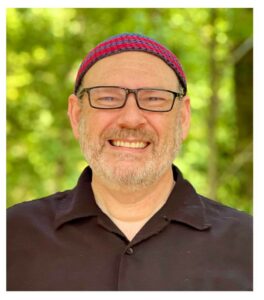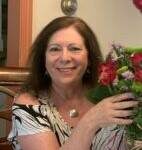
Rabbi Maurice Harris
Parshat Vayakhel
Last week’s Torah portion, Ki Tisa, featured the golden calf disaster: a story of fear, betrayal, misguided impulses and, ultimately, Divine forgiveness. This week, in Vayakhel, with the golden calf calamity behind them, the Israelites have renewed their covenant with God.
Now they are engaged in the activities needed to build the mishkan, the movable sanctuary whose blueprint was described in previous Torah portions. In Vayakhel, the Israelites donate materials, artistic skills and labor to build this sacred structure. God appoints a young man, Betzalel, to provide artistic leadership for the project.
Some commentators have said that God gave the work of building the mishkan to the Israelites in response to their recent moral lapse into idolatry. This idea focuses on the spiritually healthy aspects of taking on a collective, absorbing, complex, creative and sacred project as a way to build spiritual maturity.
Vayakhel goes into detail describing how people throughout the community contributed to the project. Exod 35: 21-19 reads:
And everyone who excelled in ability and everyone whose spirit was moved came, bringing to God an offering for the work of the Tent of Meeting… Men and women, all whose hearts moved them … came bringing brooches, earrings, rings, and pendants — gold objects of all kinds. And everyone who possessed blue, purple, and crimson yarns, fine linen, goats’ hair, tanned ram skins, and dolphin skins, brought them; everyone who would make gifts of silver or copper brought them as gifts for God; and everyone who possessed acacia wood … brought that. And all the skilled women spun with their own hands, and brought what they had spun, in blue, purple, and crimson yarns, and in fine linen. And all the women who excelled in that skill spun the goats’ hair. And the chieftains brought lapis lazuli and other stones … and spices and oil for lighting, for the anointing oil, and for the aromatic incense. Thus the Israelites, all the men and women whose hearts moved them to bring anything for the work … brought it as a freewill offering to God.
There’s a lot to notice in this set of verses: the detailed itemizing of raw materials, the highlighting of women’s contributions of expert skills and the popping out of several vivid colors. Also, up until now in the Torah — from the first verse of Genesis until the first mention of the mishkan — narratives have tended to be sparse on details, galloping along driven by dialogue and action. But here, the narrating voice wants us to notice visual details and to know that the work involved in this project included “all the men and women whose hearts moved them.”
I’ve always been surprised that gold was included in the materials that God commanded be used for the mishkan and its sacred objects, given the Israelites’ recent catastrophe involving an idol made of gold. I realize that the problem with idolatry is not the material the idol is made from, but still: After witnessing the Israelites worshiping the calf, Moses says to God, “Alas, this people has made for themselves a god of gold.” (Exodus 32:31) He doesn’t say “a god shaped like a calf.” He says “a god of gold.”
I imagine the colossal disappointment Moses must have felt in this moment, considering his upbringing in the Pharaoh’s court, where there was probably so much gold. Maybe he flashed back to his youth surrounded by gold and finery, and then to his painful realization that his royal relatives ruled a society built on idolatry, injustice and cruelty.
Perhaps by including gold, God intended a lesson for Moses as much as the community. Even a dazzling substance as potentially corrupting as gold can be put into sacred service.
Ki Tisa left us with a strong visual image of a golden calf. Vayakhel leaves us with its answer: a golden menorah that serves as a vessel for an eternal light. With its seven branches adorned with features of trees and flowers, this sacred lamp is nothing like an idol. The people do not worship it. They keep it lit. It cannot shine without them. The Divine light of their place of worship will be theirs to kindle and tend.
Rabbi Maurice Harris works as the associate director for Thriving Communities and Israel Affairs Specialist at Reconstructing Judaism. He is the author of three books. The Board of Rabbis of Greater Philadelphia is proud to provide diverse perspectives on Torah commentary for the Jewish Exponent. The opinions expressed in this column are the author’s own and do not necessarily reflect the view of the Board of Rabbis.





